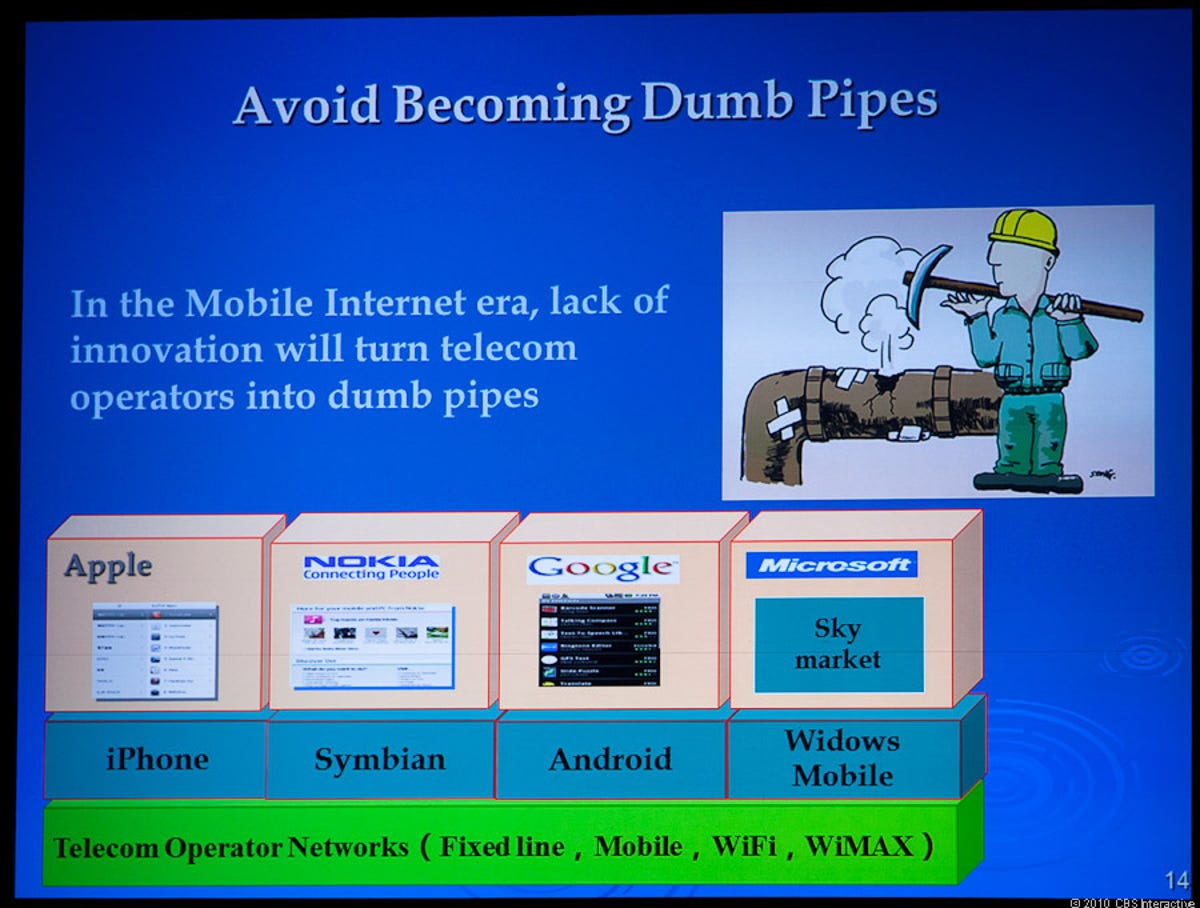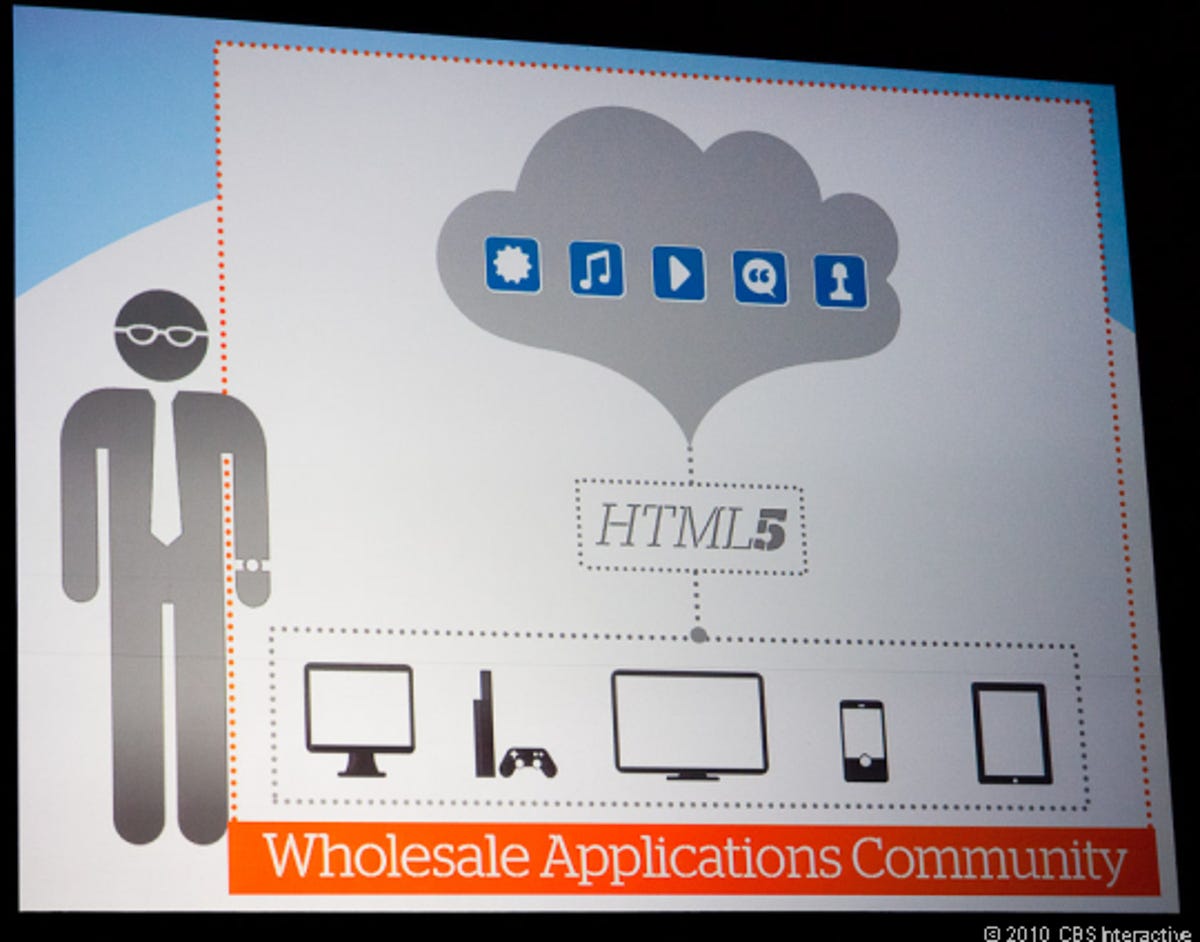
Stephen Shankland/CNET
Nokia and Microsoft want to create a “third ecosystem” to rival the mobile phone realms built by Apple and Google–but carriers have an even broader alternative of their own.
Last year at the Mobile World Congress show, a group of them unveiled the Wholesale Applications Community. It’s an effort to outflank native software and monolithic app stores with Web apps not tied as tightly to specific smartphones and available through a variety of conduits.
And this year at the show, they launched WAC.
“With the commercial launch of operator storefronts, handsets and applications, all based on WAC, we can say that WAC is now officially open for business,” WAC CEO Peters Suh said yesterday in a statement.
For all its notable allies, though, WAC faces an uphill struggle. Apple’s iOS and Google’s Android are very popular, both with programmers and with customers. Even Microsoft, trailing both those rivals, has 8,000 apps.
The WAC initiative has 68 members now, led by mobile operators China Mobile, MTS, Orange, Smart, Telefonica, Telenor, Verizon Wireless, AT&T, and Vodafone. AT&T CEO Randall Stephenson touted WAC in a speech today. On the handset side of the alliance are Huawei, LG Electronics, Samsung, Sony Ericsson, and ZTE.
“Both Samsung and LG will be further driving uptake of WAC by ensuring that all devices produced by the two companies that are capable of supporting the WAC runtime will do so,” WAC said in its statement. And Ericsson announced it’s providing a white-label storefront that others can use as their own app store.
The initiative reflects two big trends in the technology world: the rise of Web applications and mobile operators’ efforts to remain relevant to consumers for services beyond just sending and receiving data.
“Avoid becoming dumb pipes,” China Mobile CEO Wang Jianzhou advised in a speech today at Mobile World Congress. “In the mobile Internet era, lack of innovation will turn telecom operators into dumb pipes.”


Stephen Shankland/CNET
Illustrating his point were images of app stores from Apple, Nokia, Google, and Microsoft.
WAC technology is essentially a close variation of Web application programming; compliant phones come with a “runtime,” the software foundation needed to run the apps. This runtime is, essentially, a Web browser, and browser maker Opera Software, which is closely allied with Vodafone and other carriers, announced it has released its Opera Widget Runtime for WAC phone makers.
Programmers use the WAC software developer kit to create and sign their apps.
WAC released version 1.0 of the WAC interface in December. At Mobile World Congress yesterday, it released WAC 2.0 with support for HTML5‘s built-in multimedia abilities. And there’s more to come: “WAC 3.0, which will be available in September 2011, will allow these brands [phone makers and carriers] to deliver even more compelling applications, as developers are able to unlock back-end network assets including in-app billing and user authentication,” WAC said.



